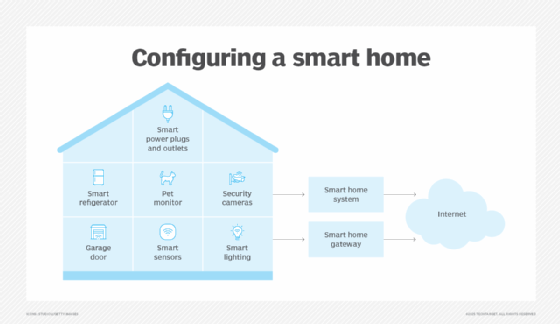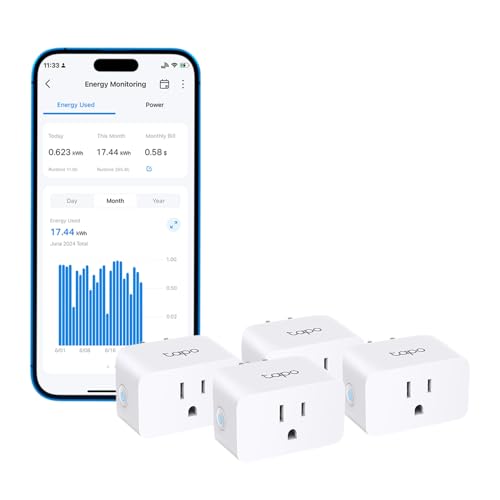Waking up feeling refreshed starts long before your feet hit the floor. Your environment plays a huge role in how energized and ready for the day you feel.
Imagine a gentle light that slowly brightens, nudging you awake naturally—no harsh alarms, no groggy mornings. Creating a wake-up lighting routine can transform your mornings, boost your mood, and set a positive tone for the entire day. Ready to discover how a simple change in your lighting can make waking up easier and more enjoyable?
Keep reading to learn the easy steps to build your perfect wake-up lighting routine.

Credit: putnams.co.uk
Benefits Of Wake-up Lighting
Wake-up lighting helps you start your day gently. It uses light to mimic natural sunrise.
This type of lighting improves how you feel and function in the morning. It supports your body’s natural rhythms.
Boosting Morning Energy
Wake-up lighting gradually increases light in your room. This helps your body wake up without shock.
It signals your brain to stop making sleep hormones. This makes you feel more alert and ready to move.
- Light increases slowly over 30 minutes
- Reduces grogginess after waking
- Supports natural energy boost
Improving Mood And Focus
Bright, warm light in the morning helps improve your mood. It can lower feelings of tiredness or sadness.
Better mood leads to better focus. You can work or study more easily after waking up with light.
- Light triggers positive brain chemicals
- Improves mental clarity
- Helps reduce morning stress
Regulating Circadian Rhythms
Wake-up lighting helps set your body clock. It signals the right time to wake up and sleep.
Regular light exposure in the morning keeps your circadian rhythm steady. This helps you sleep better at night.
- Supports consistent sleep-wake cycles
- Improves overall sleep quality
- Helps reduce jet lag and shift work issues

Credit: www.youtube.com
Choosing The Right Lighting
Creating a wake-up lighting routine can help you start your day better. The right light can make waking up easier and more natural.
Choosing the right lighting means picking the best type, color, and brightness for your needs. This guide will help you decide.
Types Of Wake-up Lights
Wake-up lights come in different styles. Some use gradual light to simulate sunrise, while others use colored LEDs or lamps.
You can find lights that sit on your bedside table or those that fit into your ceiling light fixtures.
- Sunrise Simulators: Gradually increase light to wake you up
- LED Lamps: Offer color options and adjustable brightness
- Ceiling Lights: Brighten the whole room at wake-up time
Color Temperature And Brightness
Color temperature affects how warm or cool the light looks. Warm light feels cozy, while cool light is more energetic.
Brightness is important too. Too bright light can be harsh, and too dim light might not wake you up well.
- Warm light (2700K to 3000K) is soft and gentle
- Cool light (4000K to 6500K) is bright and refreshing
- Adjust brightness for comfort and effectiveness
Smart Lighting Options
Smart lights let you control your wake-up routine with apps or voice commands. They can change colors and brightness automatically.
These lights often sync with your alarm and can adjust based on your sleep cycle or the time of day.
- App control for easy settings changes
- Voice control with assistants like Alexa or Google
- Automated schedules for consistent wake-up times
Setting Up Your Routine
Creating a wake-up lighting routine helps you start the day gently. It uses light to wake your body naturally.
Setting up the routine involves choosing the right time, sounds, and light changes. Each part helps you wake up feeling better.
Timing Your Wake-up Light
Set your wake-up light to start before your alarm. This lets your body adjust slowly to the light.
Choose a time that fits your sleep cycle. Usually, 20 to 30 minutes before waking is best.
Combining With Alarm Sounds
Use gentle alarm sounds with your wake-up light. Soft sounds help you wake calmly without a shock.
Pick sounds like birds, soft music, or nature noises. Avoid loud or harsh tones that can stress you.
- Start light 20-30 minutes before alarm
- Use soft, natural alarm sounds
- Match sound timing to light brightness
Adjusting Light Intensity Gradually
Set the light to increase slowly over time. This helps your body wake up without sudden changes.
Start with low brightness and rise to full light near your wake-up time. This mimics a natural sunrise.
- Begin with dim light
- Increase brightness in small steps
- Reach full brightness at wake-up time
Tips For Maximizing Effectiveness
Creating a wake-up lighting routine helps you start the day feeling refreshed. Using light properly can improve your mood and energy.
Simple changes in your habits can make your lighting routine work better. These tips will guide you for best results.
Consistent Sleep Schedule
Wake-up lighting works best if you go to bed and wake up at the same times. Your body’s internal clock adjusts to this routine.
Try to keep your sleep schedule even on weekends. This helps your body respond well to the light in the morning.
- Set a fixed bedtime and wake-up time
- Avoid sleeping in late on weekends
- Use alarm clocks if needed to keep schedule
Positioning Your Light Correctly
Place your wake-up light where it can shine directly on your face. This helps your brain get the signal to wake up.
Keep the light at eye level or slightly above. Avoid blocking the light with furniture or curtains.
- Put the light on your bedside table or shelf
- Make sure it faces your eyes when you wake
- Adjust brightness to a comfortable level
Avoiding Screens Before Bed
Limit screen time before sleeping. Blue light from phones and TVs can stop your body from making sleep hormones.
Try reading a book or listening to calm music instead. This helps you fall asleep faster and wake up easier with light.
- Stop using screens at least 30 minutes before bed
- Use night mode or blue light filters if needed
- Create a relaxing pre-sleep routine without devices
Troubleshooting Common Issues
Creating a wake-up lighting routine can help you start your day better. Sometimes, things may not work as planned. This guide covers common problems and easy fixes.
Knowing how to adjust your routine makes waking up easier. Use these tips to improve your lighting setup.
Light Not Waking You Up
If the light does not wake you up, check the brightness level. It might be too low to affect your body clock.
Also, make sure the light turns on at the right time. A wrong schedule can stop the light from working well.
- Increase brightness gradually to a comfortable level
- Set the light to start 30 minutes before your alarm
- Place the light near your face or where you sleep
- Test the device to confirm it turns on as scheduled
Adjusting For Seasonal Changes
Seasons change daylight hours. Your wake-up light should change too. Adjust timing and brightness with the season.
In winter, mornings are darker. You might need more light or an earlier start time to wake up.
- Set light to come on earlier in winter
- Use higher brightness during darker months
- Lower brightness and start time in summer
- Check and update settings every few weeks
Handling Light Sensitivity
Some people are sensitive to bright light. Too much light can cause headaches or discomfort. Adjust your routine carefully.
Use softer light and shorter exposure if you feel uneasy. You can also try different light colors to reduce sensitivity.
- Start with low brightness and increase slowly
- Choose warm-colored light instead of cool white
- Limit light exposure to 15-20 minutes
- Consult a doctor if sensitivity causes problems
:max_bytes(150000):strip_icc()/GettyImages-1580731160-af9e377f48844a0b904de94d5e7b80a0.jpg)
Credit: www.lifewire.com
Frequently Asked Questions
What Is A Wake-up Lighting Routine?
A wake-up lighting routine simulates natural sunrise using gradual light increase. It helps regulate your circadian rhythm and improves morning alertness.
How Do I Start A Wake-up Lighting Routine?
Begin by choosing a smart light or sunrise alarm. Set it to gradually brighten 15-30 minutes before your desired wake time.
What Are The Benefits Of Wake-up Lighting?
Wake-up lighting boosts mood, energy, and focus. It reduces grogginess and supports healthier sleep patterns by aligning with your natural body clock.
Can I Customize Light Colors In A Wake-up Routine?
Yes, many smart lights allow color customization. Warm hues mimic sunrise, promoting gentle wakefulness and a soothing morning environment.
Conclusion
Creating a wake-up lighting routine can improve your mornings. Gradual lighting helps you wake up gently. Your body feels more refreshed. Start with a smart bulb or lamp. Set it to brighten slowly before your alarm. Adjust brightness to your liking.
Experiment with different colors. Warm tones can be soothing. Consistency is key. Stick to the routine daily. Your body will adjust over time. Better mornings lead to better days. You’ll feel more energized. A simple change can make a big difference.
Try it and see the benefits.
15 min read







